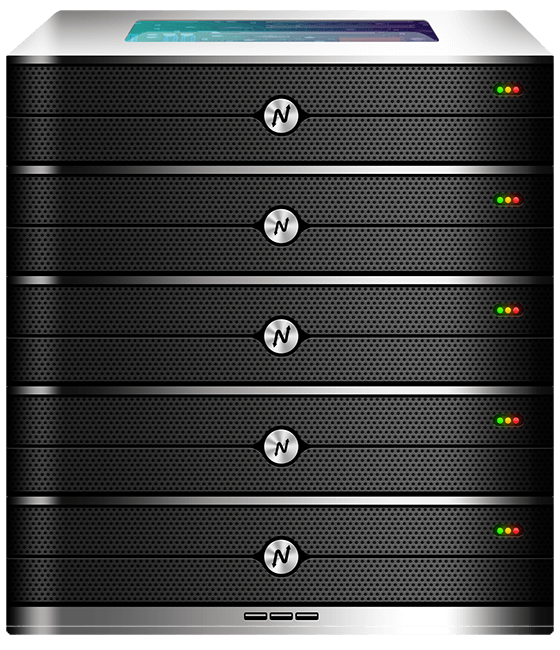When someone asks “what does org mean in a web address” they are really asking about a piece of internet history, trust signals, and practical choices for brands or nonprofits. The .org extension has been used for decades by organizations that want a noncommercial identity online. Understanding what does org mean in a web address helps you pick the right domain, manage DNS correctly, and present a trustworthy web presence to users worldwide.
India’s hosting infrastructure complements domain choices with cost-effective hosting, low latency to Asia and competitive global speed, strong security practices, and scalable plans for international growth. If you register a .org domain, pairing it with reliable hosting and proper DNS management makes your site fast and secure for visitors everywhere.
What does .org mean in a web address?
At its simplest, the phrase “what does org mean in a web address” refers to the .org top-level domain, used at the end of internet addresses like example.org. Originally created in 1985, .org was intended for noncommercial organizations, including charities, foundations, and open-source projects. Over time, the rules relaxed and any individual or entity can register a .org domain.
The semantic value of .org is still strong. Many visitors associate .org with nonprofits, community groups, and educational initiatives. That association can benefit organizations seeking trust and legitimacy. However, the extension itself does not enforce nonprofit status. The registry does not require proof of charitable status during registration, so it is the site content and branding that ultimately convey mission and credibility.
Explaining this in plain terms: .org is a domain suffix that signals organizational identity and a mission-first presence. When you ask “what does org mean in a web address” you should remember it is a label that carries public expectations, not a legal certification.
History and governance: why people ask “what does org mean in a web address”
People ask what does org mean in a web address because of the history and governance behind the .org registry. The Public Interest Registry (PIR) used to oversee .org registrations with a mission-focused ethos. That history shaped public perception: .org felt safe for nonprofits.
Later changes in registry ownership and policy led to increased interest in what a .org domain actually guarantees. The key takeaway is that a .org domain signals organizational intent, but ownership and content are private. If you want to show that you are a verified nonprofit, you should combine .org with transparent About pages, legal documentation, and third-party verifications.

Should you choose .org? Use cases and trust considerations
If you are wondering “what does org mean in a web address” because you are choosing a domain, ask these questions first: Are you a nonprofit, charity, or community project? Do you want a domain that signals mission over commerce? Do you plan to seek donations or public trust?
Use case examples:
- A local charity launching a donation portal will benefit from a .org address because visitors expect nonprofit legitimacy.
- An open-source software project can use .org to signal community governance and noncommercial roots.
- A professional blog or business should evaluate brand fit; .org can feel mismatched if you sell products directly.
Remember, choosing .org is partly about branding. It sets visitor expectations and can help with trust, but the site experience and transparency determine conversion and reputation.
How to register and manage a .org domain
Registering a .org domain follows the same steps as other TLDs. Choose a registrar or domain-enabled host, check availability, complete registration, and configure DNS records.
Step-by-step:
- Search and reserve the .org name you want through a registrar or host.
- Provide WHOIS details and choose privacy protection if available.
- Configure DNS: add A records to point to your origin IP, CNAMEs for subdomains, MX for email, and TXT for verification and SPF.
- Install an SSL certificate to enable HTTPS and protect user data.
- Add clear About, Contact, and legal pages to communicate your mission.
For smooth management, use integrated domain and hosting services. If you want to manage registration and hosting together, XenaxCloud’s Domains page offers streamlined controls and DNS management. https://xenaxcloud.com/domain/
- 1 Website Host
- 15GB SSD Storage
- 100GB Bandwidth
Technical terms explained simply
If you asked “what does org mean in a web address” and are not technical, here is a quick glossary:
- TLD: Top-level domain such as .org, .com, .net.
- DNS: The system that maps domain names to IP addresses.
- WHOIS: The contact and registration details for a domain.
- SSL/TLS: Security protocol that enables HTTPS to encrypt traffic.
These building blocks let your .org domain point to a server, send email from your domain, and secure visitor data during transactions.
SEO and brand effects: does .org help search ranking?
Many people wonder whether the answer to “what does org mean in a web address” includes search advantage. The short answer is no direct ranking boost. Search engines prioritize content quality, relevance, backlinks, and site performance more than the TLD. However, .org domains often host authoritative, nonprofit content that earns links and trust. That natural authority can indirectly support search visibility.
What matters more than the TLD:
- Fast hosting and low Time To First Byte.
- SSL certificate and secure pages.
- Structured data and clear contact information.
- High-quality, mission-relevant content that earns backlinks.
So, choose .org for branding and trust, but invest in content and performance to improve search results.
Security and compliance considerations for .org sites
If you use a .org and ask “what does org mean in a web address” with security in mind, remember the extension provides no automatic protections. Implement these controls:
- HTTPS via SSL/TLS to secure forms and logins.
- Regular backups and snapshots to recover from failures.
- DDoS protection and rate limiting for public-facing services.
- Privacy protection for WHOIS if you want to hide contact data.
Indian hosting providers often bundle cost-effective security and compliance features that help .org operators protect donor data and public-facing systems. Pairing your domain with managed hosting reduces the operational burden and helps meet data protection expectations.
Comparison: Indian servers vs US, Canada, Germany, UAE for .org hosting
When deciding where to host a .org site, geographic choice affects latency, compliance, and cost. The table below compares region attributes relevant to domain hosting and user experience.
| Criteria | India | US / Canada | Germany | UAE |
|---|---|---|---|---|
| Latency to Asia | Very Low | Moderate | Moderate | Low |
| Latency to Europe | Moderate | Low to Moderate | Very Low | Low to Moderate |
| Provisioning Speed | Fast | Fast | Fast | Moderate |
| Compliance & Data Law | Improving | Varies | Strict (EU standards) | Local regulations |
| Cost-effectiveness | High | Moderate | Moderate | Moderate |
If your .org audience is primarily in Asia, India-based hosting often gives the best latencies and costs. For European audiences with strict data requirements, Germany-origin hosting could be preferable. In many cases a CDN plus origin in India provides a strong balance between cost and global reach.
Choosing the right hosting plan for a .org site
How you answer “what does org mean in a web address” affects hosting selection. A small NGO with a brochure site needs different resources than a donation platform:
- Brochure site, low traffic: Starter — 1 Website, 2GB Storage, 10GB Bandwidth, $0.84 or Professional — 1 Website, 5GB Storage, 20GB Bandwidth, $1.20.
- Multiple projects or microsites: GrowGrid — 5 Websites, 10GB Storage, 100GB Bandwidth, $1.19 or Gold — 3 Websites, 25GB Storage, 500GB Bandwidth, $2.39.
- Donation platforms, ticketing, or medium traffic: KVM VPS 2 — 4 Vcore CPU, 16GB RAM, 50GB Storage, 4TB Bandwidth, $10.79.
- High traffic or heavy database workloads: KVM VPS 3 — 8 Vcore CPU, 32GB RAM, 80GB Storage, 5TB Bandwidth, $17.99 or SPEED KVM VPS 3 — 8 Vcore CPU, 16GB RAM, 70GB Storage, 4TB Bandwidth, $14.39.
Each plan above is designed for a different scale. If you expect campaign spikes, prioritize bandwidth, backups, and fast provisioning so you can scale quickly during peak fundraising drives.
Real-world examples and migration tips
Example 1: A local NGO registering a .org for credibility chooses Starter hosting to publish mission pages and donation forms. They pair the domain with SSL and a CDN for faster delivery.
Example 2: An open-source project uses example.org to host docs and downloads. They choose KVM VPS 2 to support documentation builds and CI pipelines.
Migration tips when moving to a new host:
- Lower TTL on DNS 48 hours before migration to speed propagation.
- Take full backups and test restores.
- Implement 301 redirects if changing URLs and monitor Search Console for crawl errors.
- Validate email records (SPF, DKIM) to preserve deliverability.
These practical steps reduce downtime and protect SEO during domain moves.
Frequently Asked Questions
What is the difference between Indian VPS and foreign VPS?
Indian VPS offers lower latency to Asian users and often better cost-efficiency, while foreign VPS may be closer to your target audience and specific regulations.
Can Indian servers handle global website traffic?
Yes; when paired with a CDN and proper routing, Indian servers can serve global traffic effectively.
Is Indian hosting cost-effective for international users?
Often yes—Indian hosting typically provides more resources per dollar, making it attractive for budget-sensitive projects.
How reliable is XenaxCloud hosting?
XenaxCloud offers multiple hosting tiers, fast provisioning, 24/7 support, and industry best practices for reliability.
Does .org guarantee nonprofit status?
No, .org does not enforce nonprofit verification; site content and transparency establish organizational legitimacy.
Will using .org hurt SEO?
No—TLD choice is minor for SEO; content quality, performance, and backlinks matter much more.
Conclusion —
Understanding exactly what does org mean in a web address helps you make better branding, security, and hosting decisions. A .org domain signals organizational intent and trust, but it does not replace transparent governance, secure infrastructure, and clear content that builds credibility.
Pair your .org domain with the right XenaxCloud plan based on scale: Starter and Professional for small sites, GrowGrid or Gold for multi-site needs, and KVM VPS tiers for production or donation platforms. Use a CDN for global reach, secure the site with SSL, and follow DNS best practices to minimize downtime.
If you are ready to register or migrate a .org domain, manage DNS and hosting together for simplicity on the XenaxCloud Domains page: https://xenaxcloud.com/domain/ Check the latest offers when you decide to purchase. https://xenaxcloud.com/offers
Take advantage of XenaxCloud’s 15-day money-back guarantee to test performance and ensure your .org domain delivers the trust and reliability your audience expects. Register your .org, pick a plan, and start building with confidence today.
Best XenaxCloud plan recommendations for .org projects
- Brochure or local nonprofit: Starter — 1 Website, 2GB Storage, 10GB Bandwidth, $0.84
- Small NGO or multi-page site: Professional — 1 Website, 5GB Storage, 20GB Bandwidth, $1.20
- Multiple projects / small network: GrowGrid — 5 Websites, 10GB Storage, 100GB Bandwidth, $1.19
- Donation platform or medium traffic: KVM VPS 2 — 4 Vcore CPU, 16GB RAM, 50GB Storage, 4TB Bandwidth, $10.79
- High performance and I/O: SPEED KVM VPS 3 — 8 Vcore CPU, 16GB RAM, 70GB Storage, 4TB Bandwidth, $14.39
If you want help choosing the best plan for your .org, tell me your expected monthly visitors and whether you need email hosting or donation processing and I will recommend the optimal setup.





